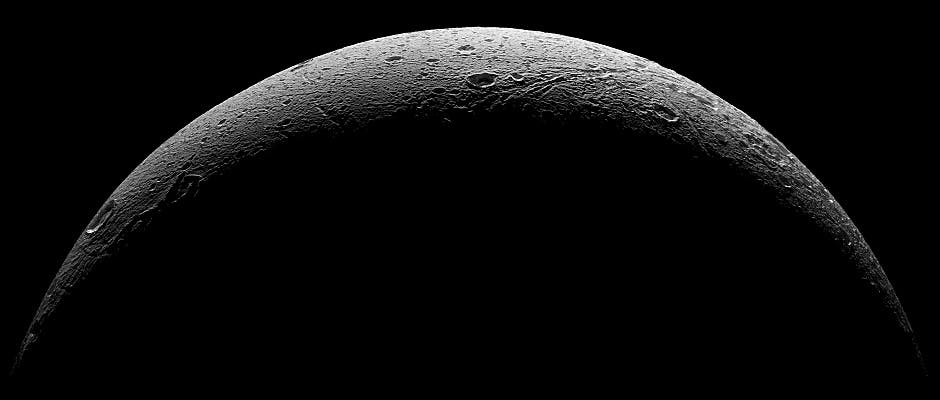The Cassini shuttle, that has been in Saturn’s orbit since 2004, took some spectacular images of the rather elusive moon, along with geophysical measurements. A crater-riddled, icy landscape covers Saturn’s moon Dione, but that doesn’t take away anything from its charm.

Though it’s nowhere near as famous as some of Saturn’s other moons – especially Titan – Dione is still significant. It’s the smallest of the “large moon” in our solar system, consists of two thirds water ice and one third rocks, likely silicate rocks. The most remarkable geological feature on Dione is the “wispy terrain” which puzzled scientists for two decades before Cassini took some close up pictures. Basically, when the Voyager space probe photographed Dione in 1980, it showed what appeared to be wispy features covering its trailing hemisphere, and no one knew what they were. Cassini revealed that the ‘wisps’ were, in fact, not ice deposits at all, but rather bright ice cliffs created by tectonic fractures (chasmata).
Now, Cassini’s back with even more great images.

“I am moved, as I know everyone else is, looking at these exquisite images of Dione’s surface and crescent, and knowing that they are the last we will see of this far-off world for a very long time to come,” said Carolyn Porco, Cassini imaging team lead at the Space Science Institute, Boulder, Colorado. “Right down to the last, Cassini has faithfully delivered another extraordinary set of riches. How lucky we have been.”
Cassini’s closest approach passed the moon at a distance of only 295 miles (474 km), offering a high-resolution view of Dione’s north pole and conducting gravity and magnetic data on the moon.
“We had just enough time to snap a few images, giving us nice, high-resolution looks at the surface,” said Tilmann Denk, a Cassini participating scientist at Freie University in Berlin. “We were able to make use of reflected sunlight from Saturn as an additional light source, which revealed details in the shadows of some of the images.”
Cassini’s long mission will come to an end in 2017, but until then, it still has a lot to do; on October 14, it will pass by Enceladus at a distance of only 49 km, enough to sample water from its spraying plumes.


